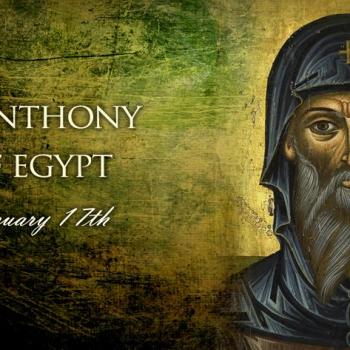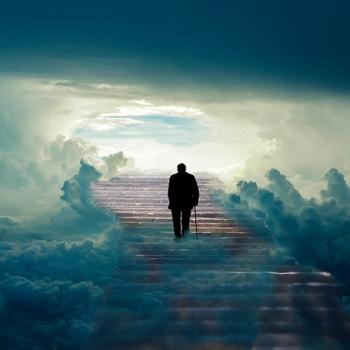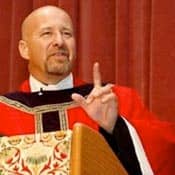The pope may be infallible but he's not immutable. In other words, the truth he teaches may not change, but he may. That's to say that while Catholic truth is eternal, the teacher of that truth, like any good teacher, is able to adapt to new situations, new demands, and new technologies.
On reading a history of the popes, like Eammon Duffy's admirable Saints and Sinners, one realizes that in every age the popes have been caught up in the maelstrom of political intrigues and economic practicalities—spiritual struggles, doctrinal controversies, and internecine power plays. Like Peter in his fishing boat the popes have had to steer a steady course through the storm, and not infrequently, have had to step out of the boat—take some huge risks, and do some wave walking with Jesus.
The ability of the papacy (and the Catholic Church) to adapt to the needs of every age, and yet maintain the unchanging faith revealed by Jesus Christ to the apostles is the Catholic Church's greatest strength, and this adaptability combined with permanence has only been possible because of the papacy. As popes have come and gone and adapted as necessary, the institution of the papacy, and therefore the Catholic Church, has also adapted while at the same time defending the time-tested truths of the Christian faith. The papacy truly is, therefore, the rock on which the Church is built.
Benedict XVI's recent renunciation of the papal office shows the essential adaptability of this ancient institution. His abdication, however, illustrates not just his personal need to retire, but his realization that the office of pope has changed radically within the last fifty years. Paul VI was the first pope to begin making apostolic journeys around the world. So, for example, his 1964 visit to the Holy Lands was the first time a pope flew on an airplane. He went on to visit the United States, Portugal, Turkey, and went on to visit Colombia, Switzerland, Uganda, and nine other countries. Suddenly the pope was not the "prisoner of the Vatican" but an international ambassador and evangelist.
If Paul VI began the global role of the pope, John Paul II took his mission to an altogether different level. In his heyday John Paul II was a kind of papal rock star. He travelled the world at an incredible pace and with phenomenal energy and zeal. Not only did he encourage the faithful and preach the gospel, but his own personal warmth and passion for truth and justice helped undermine the Communist regime of Eastern Europe as well as other corrupt dictatorships around the world. John Paul II showed us a papacy that adapted amazingly to a world of global travel, increasingly instant communications, and universal recognition.
Little wonder that the already elderly Joseph Ratzinger found those particular fisherman's shoes difficult to fill. However, I believe Benedict XVI's resignation is more than simply an old fellow stepping down to let a younger man take charge. Instead I can see a dynamic new precedent being set, one in which the papacy becomes a two-man job. The younger man is the one who is the globe-trotting evangelist while the older man becomes "pope emeritus" staying at home to watch, pray, and advise. The younger man will be free to adapt his style to the modern world while the older man presents his vast experience and wisdom. The younger man will be free to take risks and engage in battle while the older man offers the way of caution and conservatism. The younger man will engage with the world in an apostolic mission; the older man will continue to study, think, and pray—expressing the contemplative vocation while the young man expresses the apostolic mission.
When we stop to consider, isn't this how the Church of Rome was founded in the first place? On two equally sized plinths outside the great basilica of St. Peter we see the statues of both St. Peter and St. Paul. Both were the founders of the Church of Rome, and while Peter bears the keys and is the rock on which the church is built, it is Paul's thinking, theology, and mysticism which provides an equally important foundation stone for the church's mission.
If this is the way Benedict's retirement develops, then we may be seeing one of the most radical and important developments in the history of the papacy. The man in white is out preaching, teaching, and reaching for the crowds while the man in the simple black cassock is behind him reading, praying, thinking, and advising.
For those who are aware that behind the headlines God always has a secret way of working, this new arrangement will make perfect sense. Pope Benedict will play the quiet Mary to the new pope's busy Martha. He will be the generator behind the light, and the engine that powers his successor's flight.
If I am correct, then Benedict is not so much stepping off the stage as moving backstage. His ministry is not ending, but opening up into a new beginning.
12/2/2022 9:05:38 PM





